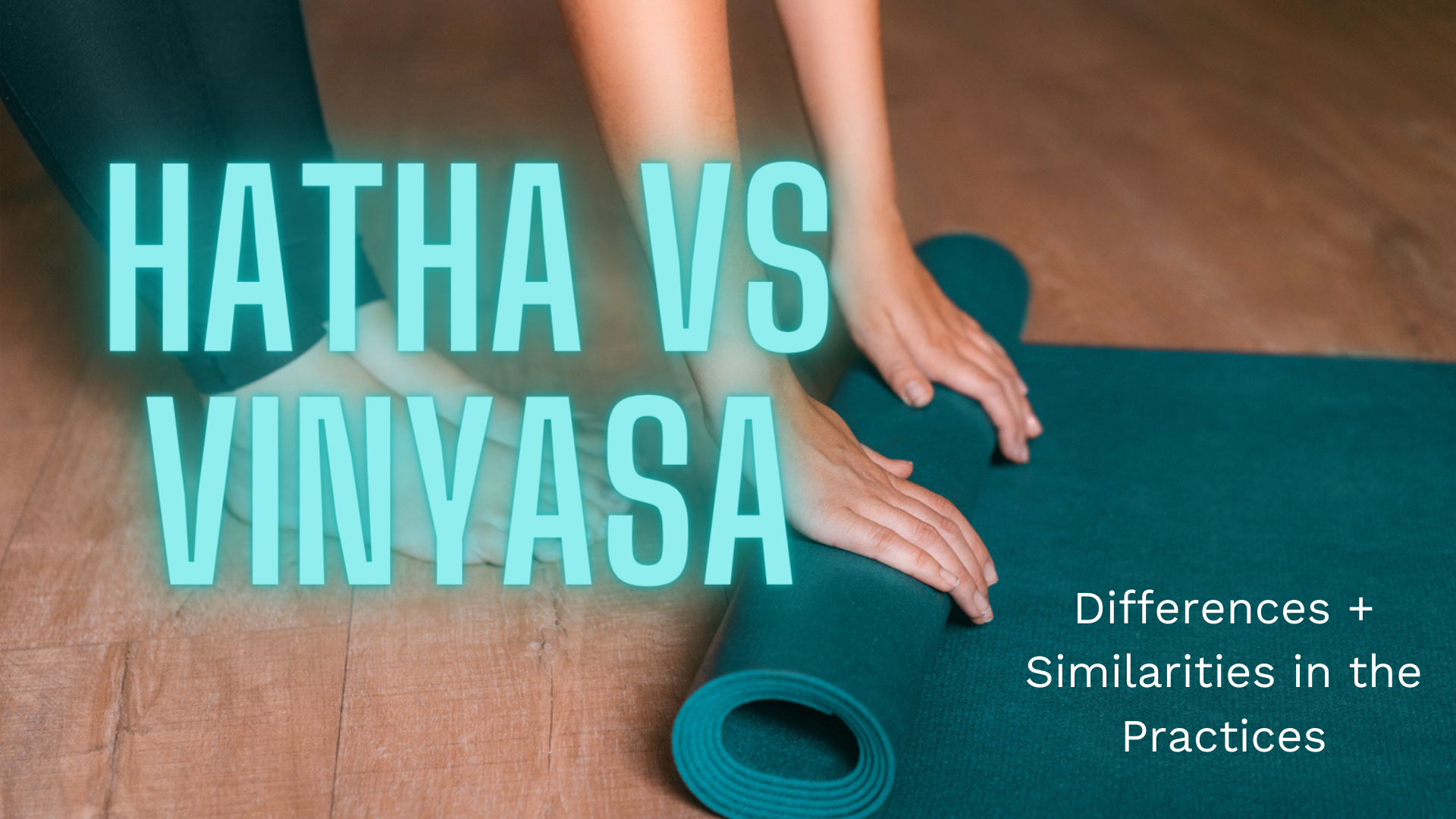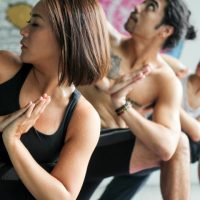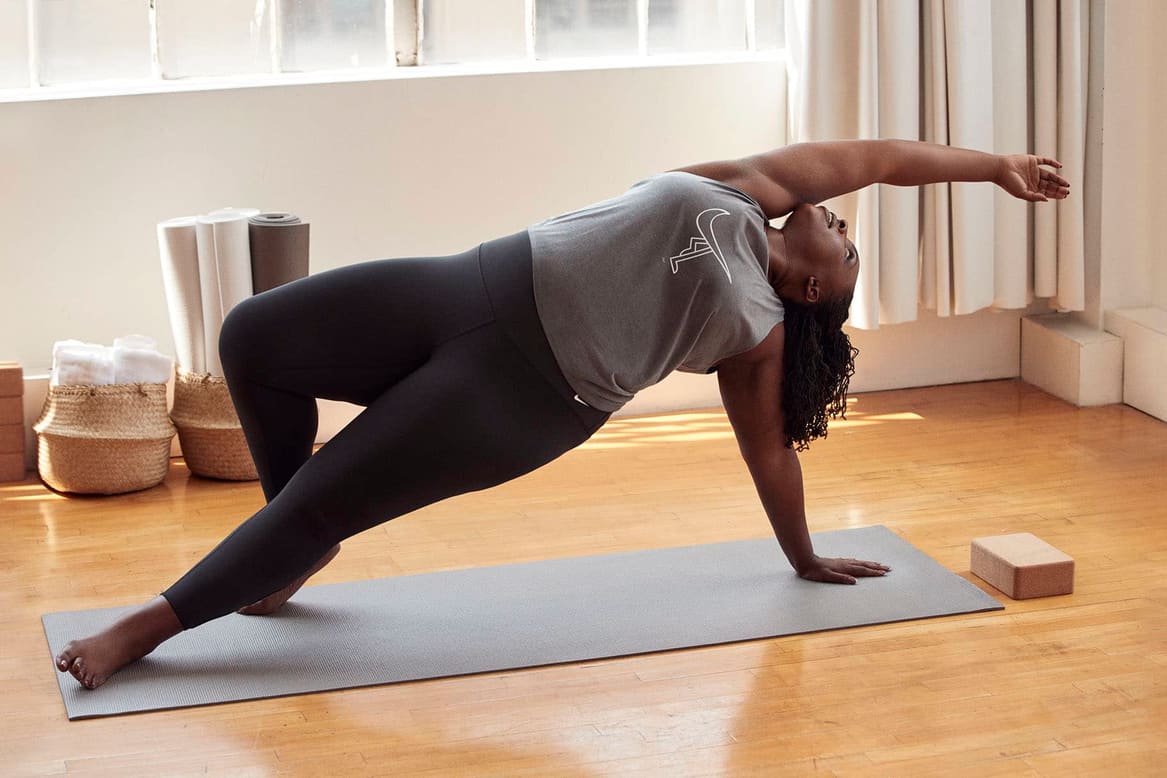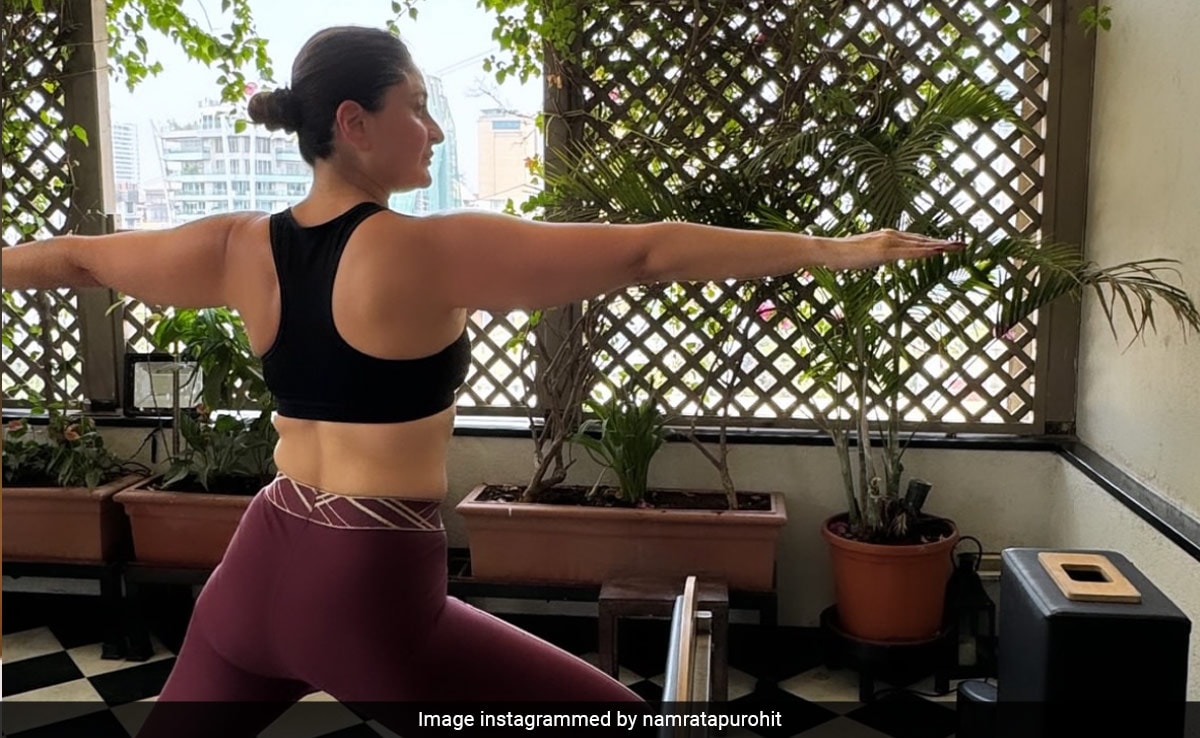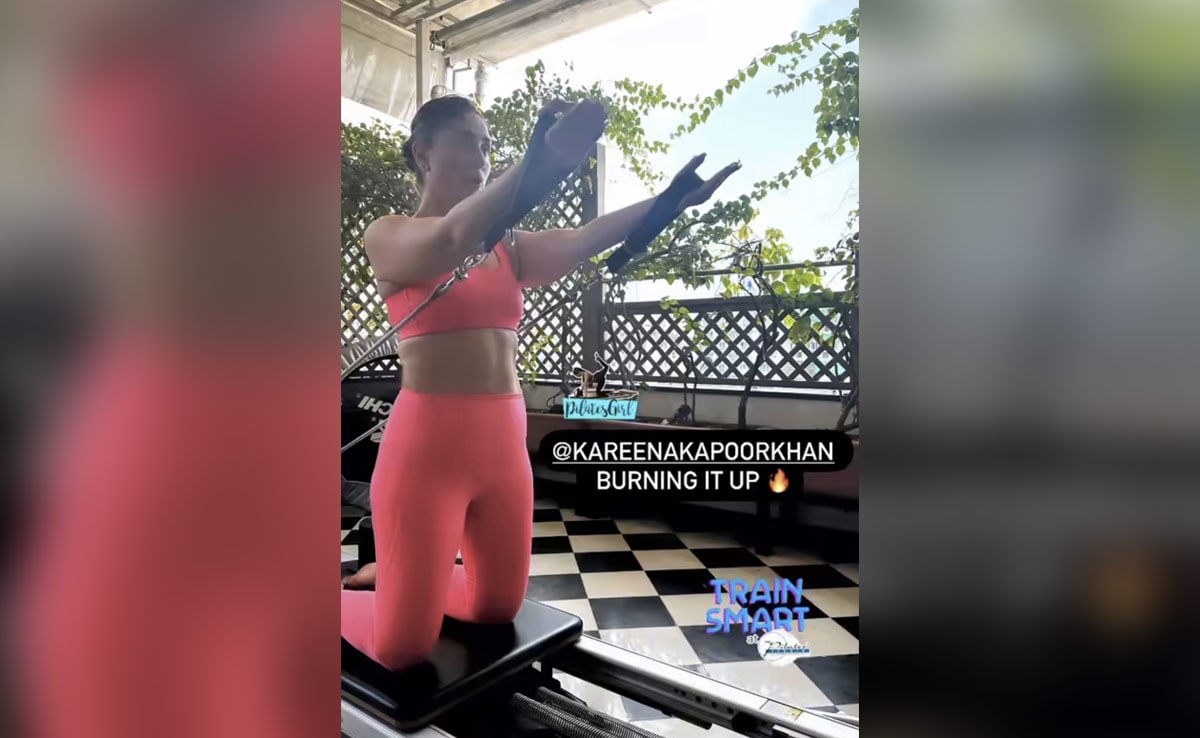The Perfect Vinyasa Flow Routine For Beginners
When you’re just starting to learn about yoga, it can be very confusing to understand all the different practices and paths. It takes study and self-reflection to find the path, or Marga, that calls to the individual.
If you want to get into the habit of yoga, sign-up to our free 30-day yoga challenge by clicking here. You will discover its deeper and more personal meaning as you progress in your routine.
One contemporary path often chosen is a subcategory of Hatha yoga called Vinyasa yoga.
A flow in Vinyasa is like a dance, linking each physical movement with the breath and finding flow in every pose and transition. For a lot of yoga beginners, tight hips and shoulders are often the main complaint or target areas. The flow below is perfect for beginners because it’s a heart opener that also focuses on the hips and shoulders.
Vinyasa Flow for Beginners
1. Mountain Pose → Urdhva Hastasana/Upward Salute
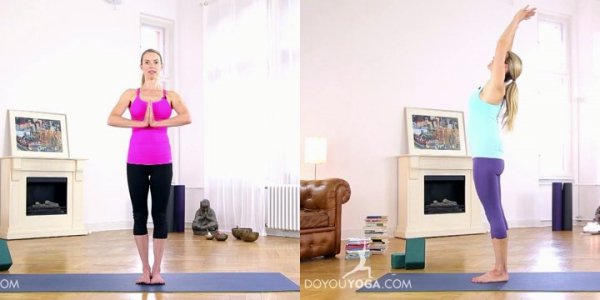
Transition: Slowly inhale the arms up with the palms facing up to scoop all the energy around the body, allow the palms to gently meet above the head, then exhale the hands down to heart center, repeat 5 times (slowing down each round if possible).
2. Urdhva Hastasana/Upward Salute → Half-Moon
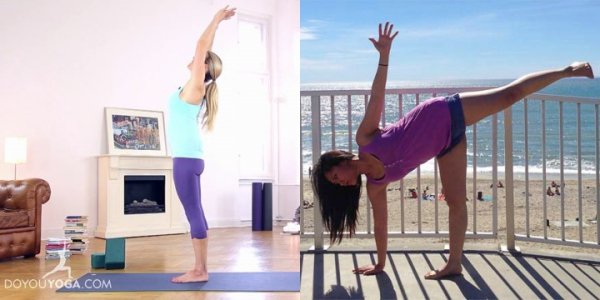
Transition: Slowly sway side to side to open up the body, hold each side for a few breaths. When back to center, exhale the arms down to heart center and go into forward fold.
3. Forward Fold → Ardha Uttanasana/Standing Half Forward Bend
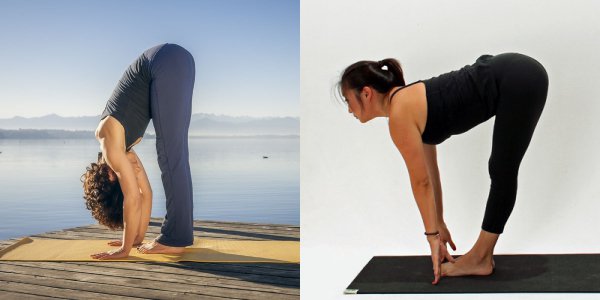
Transition: Inhale the hands to the shins, thighs, or hips, and lengthen the spine all the way from the tailbone to between the ears. Soften the face, exhale and release the legs and back, back in forward fold.
Release the hands to the mat, bending the knees (if needed) and step back with the right foot and lower the knee, place weight on the left foot and right shin.
4. Anjaneyasana/Low Lunge → Utthita Ashwa Sanchalanasana variation/Flying High Lunge

Transition: In low lunge, inhale the arms up and exhale sweep them back into flying arms (sternum leading with the palms face down about mat distance apart by the hips) while lifting the back leg for high lunge. Inhale and lift the arms back up and lower the back leg down to low lunge.
Repeat 3 times ending with an inhale-arms up to the sky in a low lunge, and release the arms to the floor and step back into Plank (left foot will meet the right at the back of the mat).
5. Plank → Chaturanga Dandasana → Upward-Facing Dog → Downward-Facing Dog
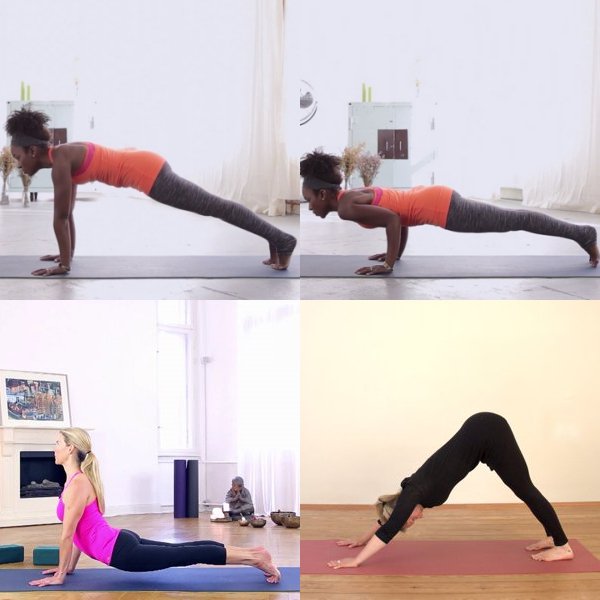
Transition: Most closely associated with Vinyasa Flow, these four asanas make the foundation of the flow. Take time inhaling in Plank, exhaling to Chaturanga, inhaling for Up Dog, and exhaling for Down Dog.
The flow comes from slowing down the movements and finding the juiciness of the body when it can inhale a little more and exhale a little more.
6. Three-Legged Down Dog → Anjaneyasana/Low Lunge → Utthita Ashwa Sanchalanasana variation/Flying High Lunge

Transition: Inhale the right leg high and exhale to lightly sweep the right leg in-between the arms for low lunge. Repeat step 3 except at the end when the arms release to the floor, slowly step up to standing forward fold (left foot will meet right at the top of the mat).
7. Uttanasana/Forward Fold → Ardha Uttanasana/Standing Half Forward Bend

Transition: Slowly bend the knees and lift the arms for upward salute to Mountain pose.
8. Tadasana/Mountain → Urdhva Hastasana/Upward Salute

Transition: After exhaling hand to heart center, continue folding forward.
9. Uttanasana/Forward Fold → Ardha Uttanasana/Standing Half Forward Bend

Transition: Step back with the left foot and lower the knee, place weight on the right foot and left shin.
10. Anjaneyasana/Low Lunge → Parivrtta Sanchalasana/Low Lunge Twist Pose
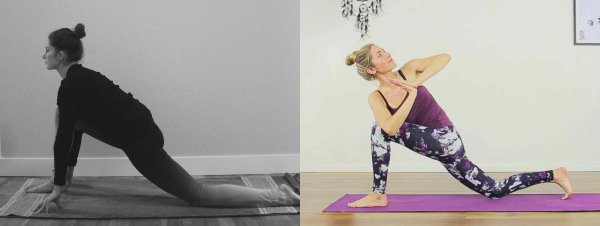
Transition: In low lunge, inhale the arms up and exhale, release them to heart center. Then twist with the spine so the left arm meets the right leg, keeping the chest lifted off the leg, allowing the palms to gently press into each other.
Hold for 2-3 breaths then shift the arms back to center and release them to the ground, slowly step back to Plank (right foot will meet the left at the back of the mat).
11. Plank → Chaturanga Dandasana → Upward-Facing Dog → Downward-Facing Dog

12. Three-Legged Down Dog → Anjaneyasana/Low Lunge → Parivrtta Sanchalasana/Low Lunge Twist Pose

Transition: Inhale the left leg high and exhale to lightly sweep the left leg in-between the arms for low lunge. Repeat step 9 except at the end when the arms release to the floor, slowly step up to standing forward fold (right foot will meet left at the top of the mat).
13. Uttanasana/Forward Fold → Ardha Uttanasana/Standing Half Forward Bend

Transition: Slowly bend the knees and lift the arms for upward salute to Mountain pose.
14. Tadasana/Mountain → Garudasana/Eagle Pose
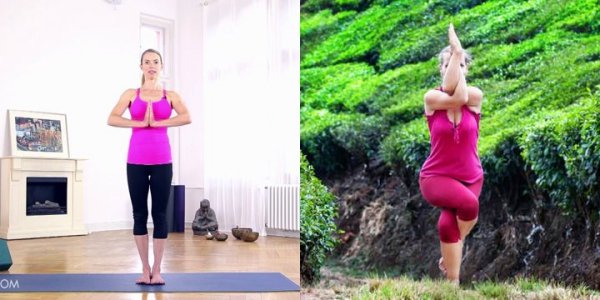
Transition: In Eagle pose, try to keep the hips square like headlights. When the right leg is over the left thigh, the right arm is under the left arm and vice versa on the other side. Hold 5 breaths on each side.
15. Urdhva Hastasana/Upward Salute → Mountain Pose with Prayer Hands

Transition: After exhaling hand to heart center, bow the head to seal the practice. Feel free to end here or continue creating a flow of choice.
[……]


